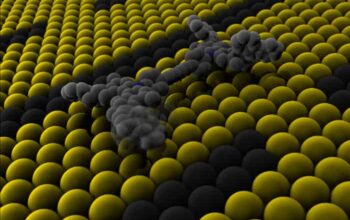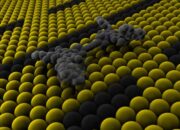In an age where computational capabilities have become the cornerstone of technological advancement, the emergence of quantum supercomputers heralds a paradigm shift in our approach to computation. Much like a symphony orchestra, where each instrument plays its note in harmonious conjunction with others to create a transcendent auditory experience, quantum supercomputers leverage the unique principles of quantum mechanics to orchestrate complex computations at unprecedented speeds.
At their core, quantum supercomputers are designed to process information using quantum bits, or qubits, a stark departure from classical binary bits. While classical bits represent information as either a 0 or a 1, qubits revel in the superposition of states. This intrinsic quality allows a qubit to exist simultaneously as both 0 and 1 until it is measured, akin to Schrödinger’s famous cat that resides in a paradoxical state of both being alive and dead until observed. This property alone enables quantum supercomputers to perform vast numbers of calculations concurrently, propelling their computational prowess beyond the limits of classical counterparts.
Furthermore, the phenomenon of entanglement plays a pivotal role in amplifying a quantum supercomputer’s capabilities. When qubits become entangled, the state of one becomes intrinsically linked to the state of another, regardless of the distance separating them. This non-local interaction operates on principles so counterintuitive that they challenge our fundamental understanding of reality, providing quantum supercomputers with a mechanism to perform interdependent calculations in a parallelized manner. Such computational interactions bolster problem-solving efficiency, particularly in complex areas such as cryptography, artificial intelligence, and material science.
Delving deeper into the architecture of quantum supercomputers reveals an array of qubit implementations, each with unique advantages and challenges. One prominent architecture is based on superconducting circuits, where qubits are represented by the flow of electricity through superconducting materials at cryogenic temperatures. Comparable to a smoothly flowing river, these circuits allow for rapid and efficient manipulation of qubit states. Conversely, trapped ion qubits, suspended in electromagnetic fields, offer extremely high coherence times and operational fidelity, akin to rare jewels locked in time. Each technology spectrum presents a trade-off between complexity, scalability, and fidelity, necessitating a nuanced understanding of the applications best suited for each type.
The quantum computer’s unique appeal becomes all the more evident when juxtaposed with its classical counterparts. Imagine trying to traverse a vast labyrinth. A classical computer would take a methodical approach, exploring one path at a time, while a quantum supercomputer would simultaneously engage in a multitude of paths, dramatically reducing the time required to solve intricate problems. This capability bestows quantum supercomputers with the potential to tackle computationally intractable issues that have vexed scientists and mathematicians for decades.
One of the most striking applications of quantum supercomputers lies in the realm of cryptography. Cryptographic protocols traditionally rely on the fact that certain mathematical problems, such as factoring large prime numbers, are computationally intensive for classical computers. Quantum supercomputers, armed with algorithms such as Shor’s algorithm, possess the capability to unravel such problems with remarkable efficiency—potentially rendering current cryptographic systems obsolete. This very ability underscores not only the promise of quantum computing but also the imperative to foster resilient cybersecurity frameworks in the face of such disruptive technology.
However, no examination of quantum supercomputers would be complete without a discussion of their societal implications. The technology embodies an intriguing duality: it holds the potential to unlock transformative scientific advancements and economic growth, while simultaneously posing existential challenges related to security and ethics. The emergence of quantum computing could lead to revolutionary breakthroughs in drug discovery, optimization problems, and complex system simulations, suggesting a future brimming with possibilities. Yet, this promise must be tempered with caution, particularly regarding its capacity to disrupt current financial and governmental structures.
In conclusion, quantum supercomputers are not merely a continuation of the digital revolution; they represent a quantum leap into a new realm of computational possibilities. By harnessing the principles of superposition and entanglement, they pave the way for addressing problems previously deemed insurmountable. This enthusiasm is matched by the complexity of the environment in which they will operate, where scientific and technological advancements intertwine with ethical considerations and societal readiness. As the world stands on the precipice of a new computational era, one must ponder the ultimate implications of such advanced technology, reflecting on how best to navigate these uncharted waters while ensuring that the benefits of quantum supercomputing are realized equitably and responsibly.









